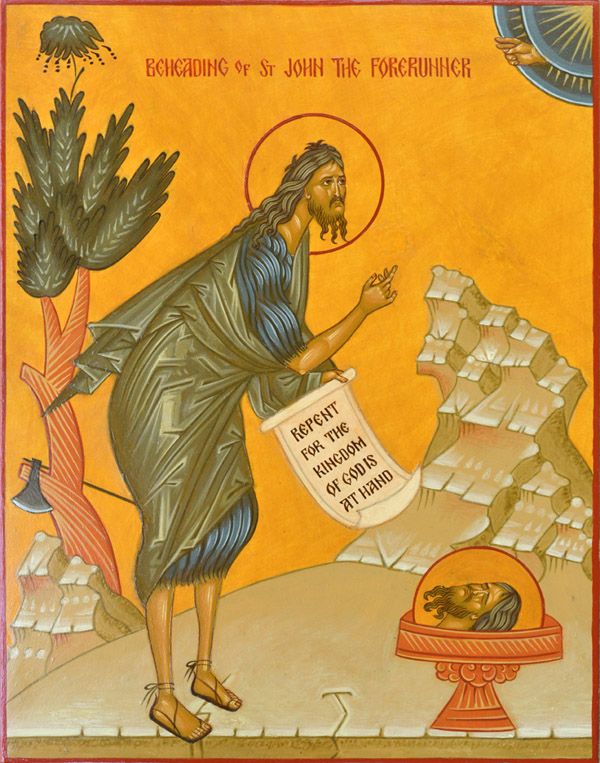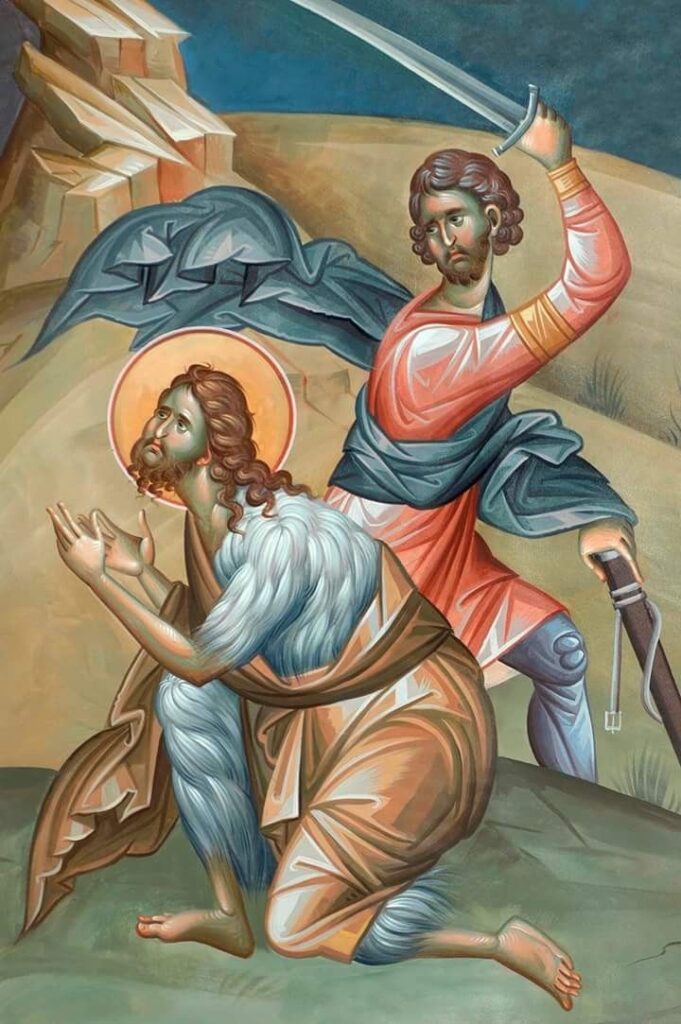Commemorated on August 29

Herod Antipas, the son of the Herod who slew the children of Bethlehem at the time of Christ’s birth, was ruler of Galilee when John the Baptist was preaching. He was married to the daughter of Aretas, an Arabian prince. But Herod, an evil sprout of an evil root, put away his lawful wife and unlawfully took Herodias as his concubine. Herodias was the wife of his brother Philip, who was still alive. John the Baptist stood up against this lawlessness and strongly denounced Herod. Herod then cast John into prison.
During a banquet in his court at Sebastia in Galilee, Salome – Herodias and Philip’s daughter – danced before the guests. Herod, drunk with wine, promised Salome anything she asked of him, even ifs it were half of his kingdom. Salome was persuaded by her mother Herodias to ask for the head of John the Baptist. Herod gave the order and John was beheaded in prison – and his head as presented to her on a platter.
John’s disciples took the body of their teacher by night and honourably buried it, but Herodias pierced John’s tongue with a needle repeatedly and buried his head in an unclean place.
However, God’s punishment quickly befell this group of evildoers. Prince Aretas, avenging his daughter’s honor, waged war against Herod with his army and defeated him. The defeated Herod was sentenced by the Roman Caesar, Caligula to exile. First he was sent to Gaul and later Spain. Herod and Herodias lived lives of poverty and humiliation in exile until the earth opened up and swallowed them.
Salome died an evil death on the Sikaris River. Salome was living in the Spanish town of Lerida with her exiled mother and Herod. Salome set out across the frozen river Sikaris one day. The ice broke and she fell into the water up to her neck. Shards of ice jammed around her neck and she struggled, treading her feet in the water, as she once danced at the court of Herod. She was unable to either raise herself up or to sink down, and a shard of ice severed her head. The water carried her body away, and her head was brought to Herodias on a platter as was once the head of John the Baptist. Behold how terribly a death resembles the sin committed.
Saint John’s beheading occurred just before Passover, but its celebration on August 29 was established because a church that had been built over the grave in Sebastia, by Emperor Constantine and Empress Helen, was consecrated on August 29. The relics of John’s disciples Eliseus and Audius were also placed in that church. Eventually, through God’s providence, his head was uncovered and that feast is celebrated on February 24.
Troparion & Kontakion
Troparion — Tone 2
The memory of the righteous is celebrated with hymns of praise, / but the Lord’s testimony is sufficient for you, O Forerunner. / You were shown in truth to be the most honorable of the prophets, / for you were deemed worthy to baptize in the streams of the Jordan Him whom they foretold. / Therefore, having suffered for the truth with joy, / you proclaimed to those in hell God who appeared in the flesh, / who takes away the sin of the world, / and grants us great mercy.
Kontakion — Tone 5
The glorious beheading of the Forerunner, / became an act of divine dispensation, / for he preached to those in hell the coming of the Savior. / Let Herodias lament, for she entreated lawless murder, / loving not the law of God, nor eternal life, / but that which is false and temporal.
